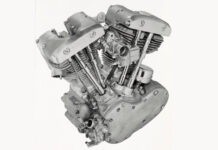We’d never seen the TV meteorologists as animated as the days before Hurricane Sandy slammed the East Coast. It was the first most of us had heard the term “storm surge,” and all we knew was that a big one was projected to hit the barrier islands of New York and New Jersey. All through the night, the wind screeched and howled its way through my neighborhood, and we watched torn transformer wires whipping around, sending sparks into the treetops. Tuesday morning, we saw Monday night’s footage on TV that showed the dramatic explosion of an electrical transformer at the Con Edison plant in Manhattan, New York, plunging much of New York City into darkness.
The next day, we began to see film footage of the devastation Sandy wrought in the Rockaways, Staten Island, Brooklyn and other parts of the New York shoreline. Connecticut suffered damages along its coast. Closer to home was the obliteration of hundreds—maybe even thousands—of residences along the hundred miles of Jersey Shore. Over eight million lost power, and the overtaxed utilities, supplemented by out-of-state power companies, battled to bring everything online again. Just as recovery began in the tri-state area, on November 6, Nor’easter Athena caused further damage, knocking out power that had already been restored.
The graphic description of the storm surge in no way prepared anyone for the devastation that resulted, nor its aftermath. The storms had dumped sand and water everywhere, washing out bridges and roads. Sandy uprooted tens of thousands of trees that fell on houses, cars and streets. New Jersey Governor Chris Christie was a constant presence in our homes—at least those of us who still had homes, televisions and electrical power—as he worked day and night to get federal aid and other services to help residents recover.
All 21 counties in New Jersey were declared federal disaster areas. Brooklyn’s polluted Gowanus Canal spilled over into the streets. Raw sewage from flooded treatment plants ended up in people’s basements, and an oil storage tank ruptured, spilling diesel fuel into the Arthur Kill waterway that separates New York and New Jersey. Boil-water advisories were implemented. Mandatory evacuations were enforced. Odd-even day gas rationing was mandated in New York City, Long Island, and 12 counties in Northern New Jersey. Many of those who had generators couldn’t use them—the majority of the gas stations were closed due to loss of power. Fights erupted at the few gas stations that were open, as people waited for many hours to fill their gas tanks and containers.
Two weeks later, 120,000 were still without power and natural gas lines had been cut to some of the hard-hit areas. Many people couldn’t even go home because their towns were considered unsafe. A few weeks later, the National Guard “assisted” with grab ‘n’ go operations, where some residents were escorted to their homes and allowed only half an hour to grab some belongings. Some of these same residents were served with notices that they had to repair their homes in short order or face demolition.
It seemed like Armageddon.
But then, small miracles began to occur. Community relief organizations set up in firehouses, town halls and churches with community kitchens, warming stations, clothing and supplies for displaced and distressed residents. Eventually FEMA and the Red Cross showed up, but it was the grassroots organizations that helped people with tasks such as mucking out houses and mold remediation. I volunteered to muck out houses in Union Beach, New Jersey, one day—the pure and utter destruction was shocking just to look at—and I saw the amazing work that the folks from Rainbow Sandy Superstorm Rapid Response, in conjunction with local and out-of-state volunteers, were doing at the Union Firehouse. Another day, OccupySandyNJ, a community recovery network, directed me to Sea Bright, New Jersey, where I helped muck out a family-owned hardware store. Every business in that town was affected. Nothing was open.
Bikers and bike shops began to show what they were made of. Harley-Davidson dealerships offered their stores as warming and charging stations, providing hot food and drinks. Others took up collections of food, clothing, bedding, household goods and personal care items to deliver to flood-ravaged areas. Authors Tom Cotter and Ken Gross wrote a new book, Rockin’ Garages: Collecting, Racing and Riding with Rock’s Great Gearheads, and a portion of book sales will be donated to Sandy relief efforts. Motorcycle personality Cat Hammes, a.k.a. the One-Legged Blonde, has started a fund to help those who have lost their homes in the storm. Retrocycle in Boonton, New Jersey, is collecting donations for hurricane victims. Indian Larry Motorcycles has been accepting donations and they’ve driven several truckloads of food and supplies to some of the worst-hit areas in their hometown of Brooklyn. Just after the storm, the Hallowed Sons MC, also out of Brooklyn, headed to the storm-ravaged New Dorp section of Staten Island to offer help to residents there.
The week after Sandy hit, Camping World/Good Sam, parent company of THUNDER PRESS, sent $75,000 worth of supplies to the Camping World store in Lakewood, New Jersey, for distribution to relief centers in the area. I spent the better part of the day hauling sleeping bags, blankets, air mattresses, lanterns and bottled water from Camping World to the relief center at Church of Grace and Peace in Toms River. There I met Eugene Lyon, the site manager for the church, who also happens to be the president of the Trinity Motorcycle Ministry. Eugene was, at various times, driving a forklift, organizing supplies and doing other back-breaking tasks. Other members of Trinity MM volunteered as their work schedules would permit, with some of them working with Samaritan’s Purse, another relief organization set up at the church, to do home rip-outs.
The death toll from Sandy has reached 110. New York and New Jersey have estimated about $40 billion in damages, making Sandy the second-most expensive natural disaster in U.S. history. Yet, there is a growing list of bikers and other volunteers who, in spite of their own misfortunes, have opened their hearts, as well as their wallets, to help their neighbors. Sandy has knocked us down, but not out. We are Jersey strong.




















